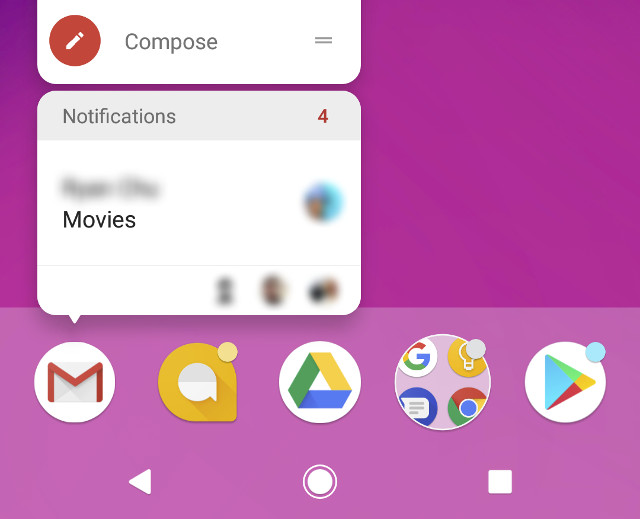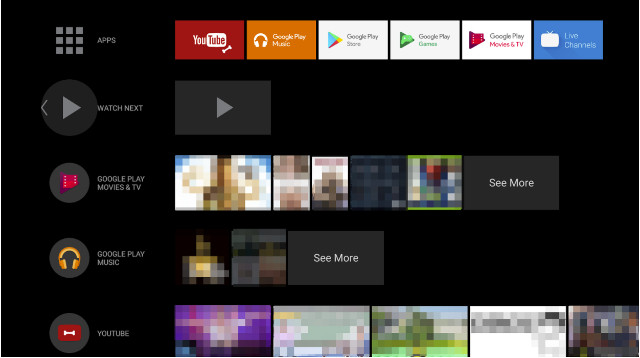After the first Android O developer preview released in March, Google has just released the second developer preview during Google I/O 2017, which on top of features like PiP (picture-in-picture), notifications channels, autofill, and others found in the first preview, adds notifications dots, a new Android TV home screen, smart text selection, and soon TensorFlow Lite. Google also introduced Android Go project optimized for devices with 512 to 1GB RAM.
Notifications dots (aka Notification Badges) are small dots that show on the top right of app icons – in supported launchers – in case a notification is available. You can then long press the icon to check out the notifications for the app, and dismiss or act on notifications. The feature can be disabled in the settings.
Android TV “O” also gets a new launcher that allegedly “makes it easy to find, preview, and watch content provided by apps”. The launcher is customizable as users can control the channels that appear on the homescreen. Developers will be able to create channels using the new TvProvider support library APIs.
I found text selection in Android to be awkward and frustrating most of the big time, but Android O brings improvements on that front with “Smart Text Selection” leveraging on-device machine learning to copy/paste, to let Android recognize entities like addresses, URLs, telephone numbers, and email addresses.
TensorFlow is an open source machine learning library that for example allows image recognition. Android O will now support TensorFlow Lite specifically designed to be fast and lightweight for embedded use cases. The company is also working on a new Neural Network API to accelerate computation, and both plan for release in a future maintenance update of Android O later this year.
Finally, Android Go project targets devices with 1GB or less of memory, and including optimization to the operating system itself, as well as optimization to apps such as YouTube, Chrome, and Gboard to make them use less memory, storage space, and mobile data. The Play Store will also highlight apps with low resources requirements on such devices, but still provide access to the full catalog. “Android Go” will ship in 2018 for all Android devices with 1GB or less of memory.
You can test Android O developer preview 2 by joining the Android O beta program if you own a Nexus 5X, 6P, Nexus Player, Pixel, Pixel XL, or Pixel C device.

Jean-Luc started CNX Software in 2010 as a part-time endeavor, before quitting his job as a software engineering manager, and starting to write daily news, and reviews full time later in 2011.
Support CNX Software! Donate via cryptocurrencies, become a Patron on Patreon, or purchase goods on Amazon or Aliexpress






